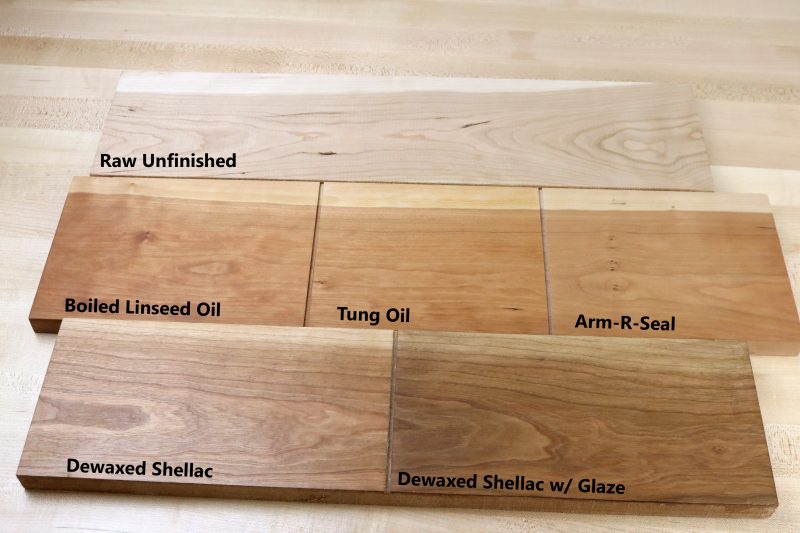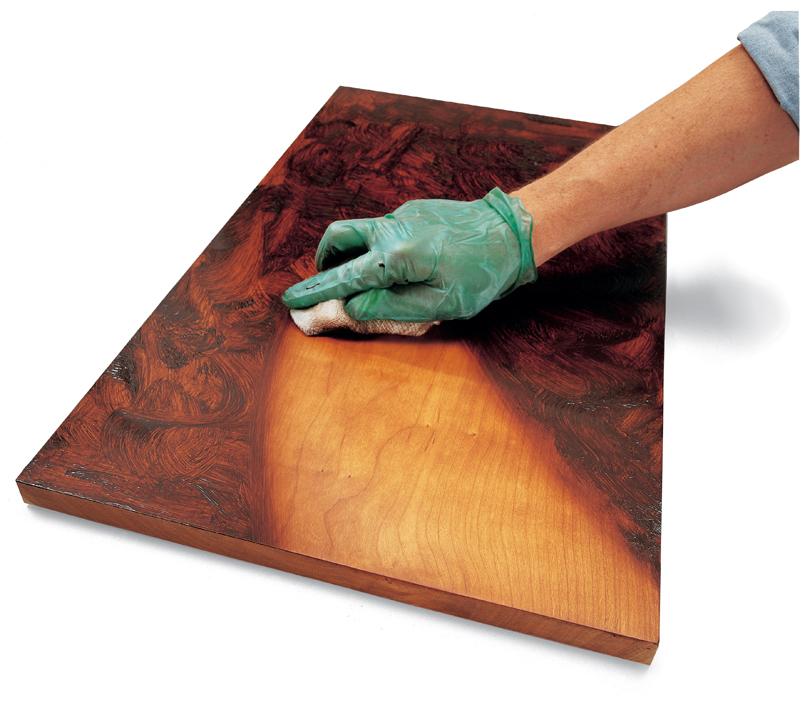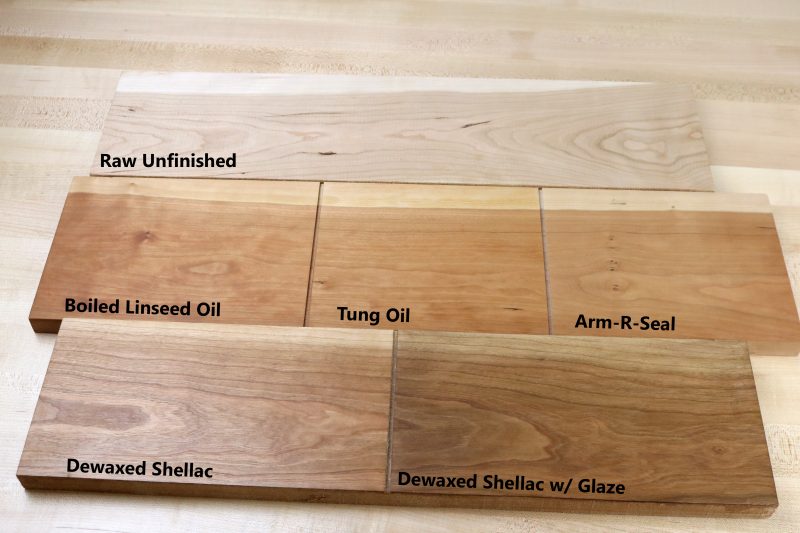Are you wondering what is the best finish for cherry wood? Well, you’ve come to the right place! Choosing the right finish can bring out the natural beauty and enhance the durability of cherry wood furniture or projects. In this article, we’ll explore different finish options and help you find the perfect one for your cherry wood creations.
When it comes to finishing cherry wood, there are a few factors to consider. Firstly, you want to highlight its warm tones and rich grain patterns. Secondly, you want a finish that offers protection against moisture, scratches, and everyday wear and tear. Lastly, you want a finish that is easy to apply and maintain over time.
From traditional favorites like oil-based finishes to modern alternatives like water-based polyurethane, we’ll discuss the pros and cons of each option. Whether you’re a seasoned woodworker or a beginner looking to tackle your first project, we’ve got you covered. So let’s dive in and discover the best finish for cherry wood!

What Is the Best Finish for Cherry Wood? A Guide to Achieving Beautiful Results
When it comes to cherry wood, finding the best finish to enhance its natural beauty can be a challenging task. With its warm hues and unique grain patterns, cherry wood deserves a finish that will bring out its full potential. In this guide, we will explore the top finishes for cherry wood, discussing their characteristics, benefits, and application techniques. Whether you’re looking for a glossy, satin, or natural look, we’ve got you covered.
Factors to Consider When Choosing a Finish for Cherry Wood
Before diving into the various finishes available for cherry wood, it’s essential to understand the factors that can influence your decision. The color and grain patterns of cherry wood can vary significantly, so it’s crucial to take these variations into account when selecting a finish. Additionally, consider the intended use of the wood, as different finishes offer varying levels of protection against wear and tear. Finally, think about the aesthetic you want to achieve – whether you prefer a glossy, satin, or natural appearance.
The Benefits of Using a Water-Based Finish
Water-based finishes have become increasingly popular due to their low toxicity, quick drying time, and ease of application. These finishes are available in a range of sheens, from matte to high gloss, allowing you to achieve the desired look. One of the significant advantages of using a water-based finish on cherry wood is that it preserves the wood’s natural color and prevents it from darkening over time. Additionally, water-based finishes are known for their durability, providing excellent protection against scratches, heat, and moisture.
When applying a water-based finish on cherry wood, it’s crucial to properly prepare the surface by sanding it to a smooth finish. Apply the finish using a synthetic brush or sprayer, following the manufacturer’s instructions. Multiple coats may be necessary to achieve the desired level of sheen and protection. Once the finish has dried, lightly sand the surface with fine-grit sandpaper to ensure a smooth and even appearance. Finally, buff the surface with a clean cloth to achieve a glossy finish.
Exploring the Richness of an Oil-Based Finish
For those who appreciate a more traditional look, an oil-based finish can be an excellent choice for cherry wood. Oil-based finishes penetrate deep into the wood, enriching its color and enhancing the natural beauty of the grain. Cherry wood treated with an oil-based finish exudes warmth and depth, creating a stunning visual impact. Another advantage of oil-based finishes is their ability to provide long-lasting protection against scratches and stains.
To apply an oil-based finish on cherry wood, begin by sanding the surface to remove any imperfections. Apply the finish using a natural bristle brush, working with the grain. Allow the finish to penetrate the wood for a few moments, then wipe off any excess with a clean cloth. Depending on the desired level of protection, multiple coats may be necessary. After each coat, allow the finish to dry thoroughly before applying the next one. Once the final coat has dried, use steel wool to smooth the surface, then buff with a clean cloth for a lustrous finish.
Unleashing the Beauty of Danish Oil
Danish oil is a popular choice for enhancing the natural beauty of cherry wood, providing a combination of protection and aesthetics. This finish not only brings out the wood’s warm tones and grain patterns but also offers protection against moisture, stains, and daily wear. Danish oil is easy to apply and requires minimal maintenance, making it an excellent choice for both beginners and experienced woodworkers.
To apply Danish oil on cherry wood, start by sanding the surface to ensure a smooth and even finish. Apply the oil generously using a brush, sponge, or rag, ensuring that the entire surface is covered. Allow the oil to soak into the wood for approximately 15 minutes, then wipe off any excess. For enhanced protection, additional coats may be applied after allowing sufficient drying time between each coat. To maintain the finish, periodically apply a thin coat and wipe off any excess to keep the wood looking vibrant and beautiful.
Choosing the Right Finish for Your Cherry Wood Project
Now that you’re familiar with the top finishes for cherry wood, it’s time to choose the one that best suits your project. Consider the desired appearance, level of protection, and ease of application when making your decision. Whether you opt for a water-based finish to preserve the natural color, an oil-based finish for a traditional look, or Danish oil for a perfect balance of aesthetics and durability, the key is to experiment and find the finish that brings out the best in your cherry wood.
Key Takeaways: What is the Best Finish for Cherry Wood?
- A popular finish for cherry wood is a clear, furniture-grade varnish.
- Oil-based finishes, such as linseed oil or tung oil, can enhance the natural beauty of cherry wood.
- Shellac is a traditional finish that provides a warm and amber tone to cherry wood.
- Water-based finishes are also suitable for cherry wood and offer quicker drying times.
- Experimenting with different finishes and testing samples on scrap cherry wood can help you determine the best finish for your specific project.
Frequently Asked Questions
Looking to enhance the beauty of your cherry wood furniture? Find out more about the best finishes for cherry wood in the following Q&A.
1. What finishes work best for cherry wood?
When it comes to cherry wood, finishes that enhance its natural beauty are ideal. Clear or light finishes like natural oil or varnish allow the warm tones and grain patterns of the wood to shine through. These finishes provide a protective layer while maintaining the wood’s natural appearance. Alternatively, you can opt for darker finishes like stains or dyes to deepen the color or achieve a more traditional look.
Ultimately, the best finish for cherry wood depends on your personal preference and the desired outcome. It’s a good idea to test different finishes on a small, inconspicuous area of the furniture to see which one you prefer before applying it to the entire piece.
2. Are there any finishes to avoid for cherry wood?
While cherry wood is versatile and can work with various finishes, there are a few to avoid. Glossy finishes like high-gloss lacquer or polyurethane may create an unnatural sheen and detract from the wood’s natural beauty. Additionally, finishes that contain yellow or orange undertones can alter the appearance of cherry wood and clash with its warm reddish hues.
It’s always a good idea to test any finish on a small area of your furniture before committing to it. This way, you can ensure that it complements the cherry wood and achieves the desired effect.
3. How should I prepare cherry wood before applying a finish?
Proper preparation is key to achieving a beautiful finish on cherry wood. Start by sanding the surface to remove any imperfections and achieve a smooth finish. Begin with a coarse sandpaper and gradually move to a finer grit for a polished result.
After sanding, make sure to remove all dust and debris before applying the finish. Use a tack cloth or a damp cloth to wipe down the wood, ensuring it is clean and free from any particles that could mar the finish. Taking these steps will help you achieve a professional-looking result.
4. How do I apply a finish to cherry wood?
Applying a finish to cherry wood can be done using various methods, such as brushing, wiping, or spraying. The method you choose depends on the type of finish you’re using and your personal preference.
If you opt for brushing, use a high-quality brush and apply thin, even coats in the direction of the wood grain. For wiping, use a clean cloth or sponge and work in small, circular motions. Spraying can provide an even application, but make sure to follow the manufacturer’s instructions and use proper ventilation.
5. How do I maintain the finish on cherry wood?
To keep the finish on cherry wood looking its best, regular maintenance is key. Avoid placing hot or wet items directly on the surface to prevent damage. Use coasters and avoid spills when possible. Keep the wood away from direct sunlight to prevent fading or discoloration.
For routine cleaning, use a soft cloth or duster to remove dust and gently wipe the surface. Avoid using harsh cleaning products that can strip the finish or damage the wood. If necessary, use a mild soapy solution and follow up with a dry cloth to remove any residue. Periodically applying a fresh coat of the same finish can help revive and protect the wood’s appearance.

Summary
So, when it comes to choosing the best finish for cherry wood, there are a few options.
One popular choice is the natural finish, which brings out the wood’s rich colors. Another option is the oil-based finish, known for its durability. Lastly, the water-based finish is a good choice for those who want a more eco-friendly option. It’s important to consider the desired look, durability, and ease of application when making a decision. Ultimately, the choice comes down to personal preference and the specific needs of the project.
